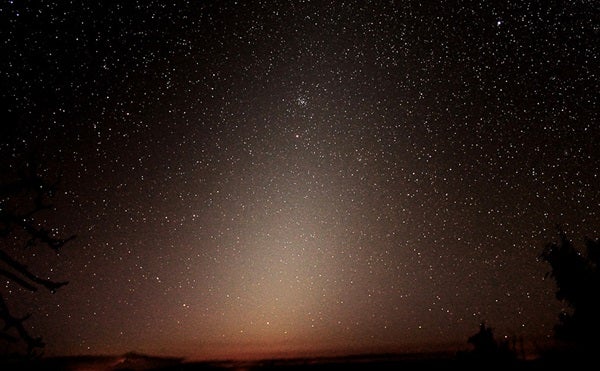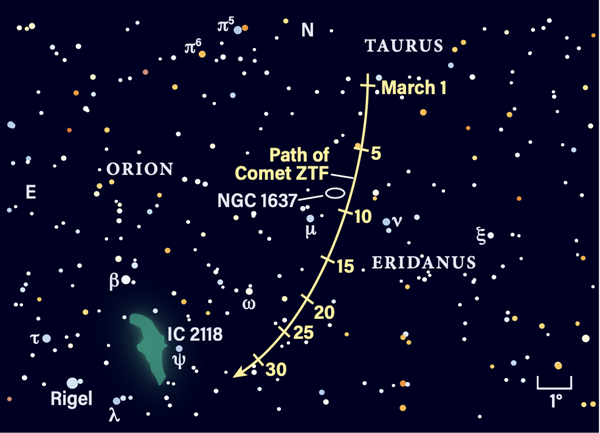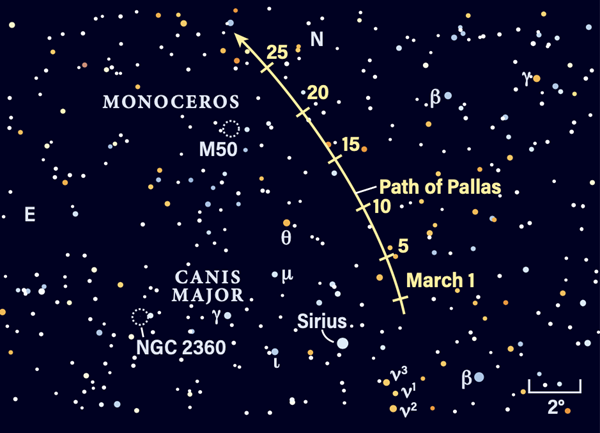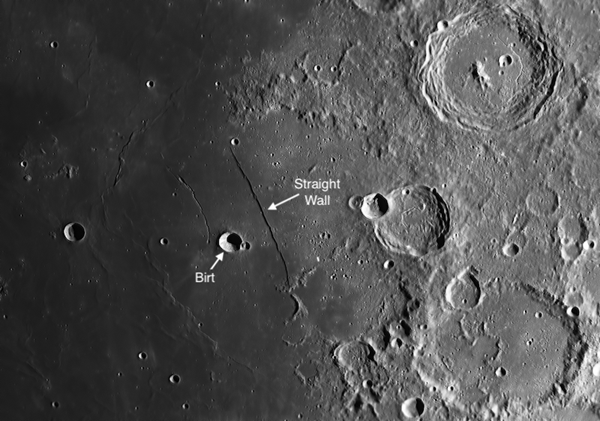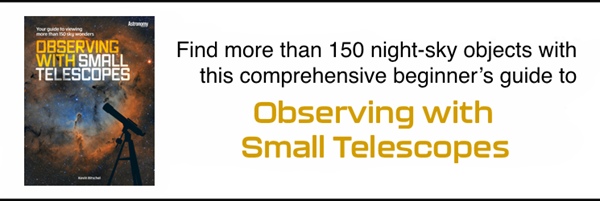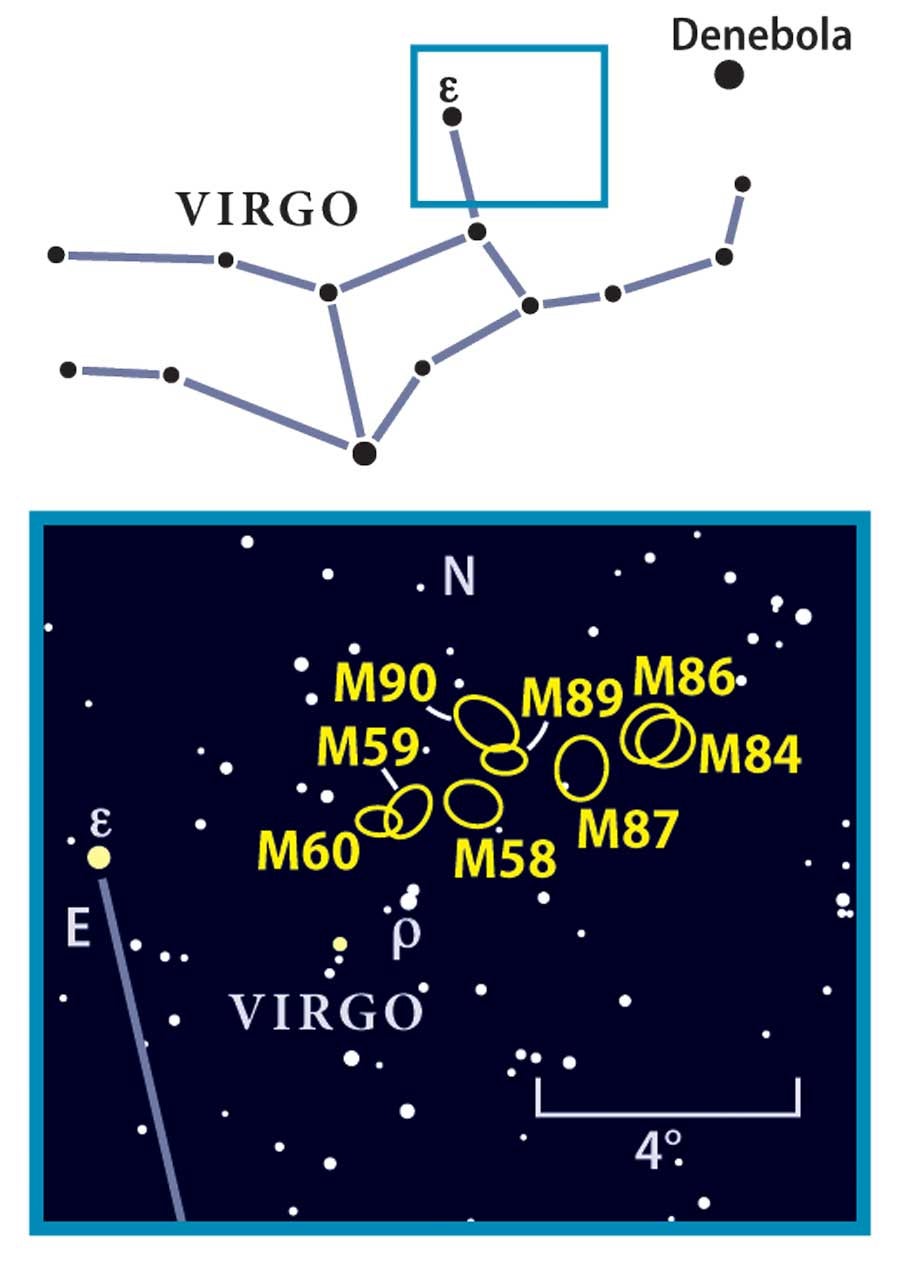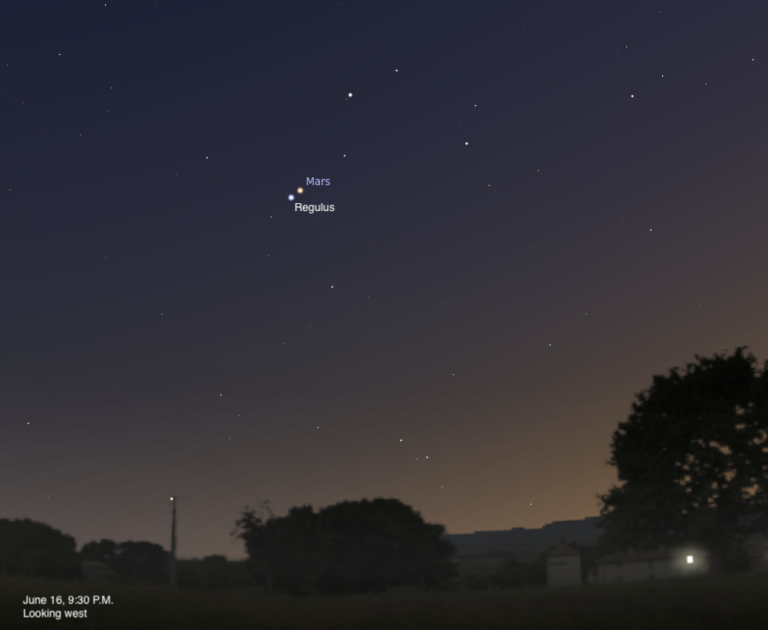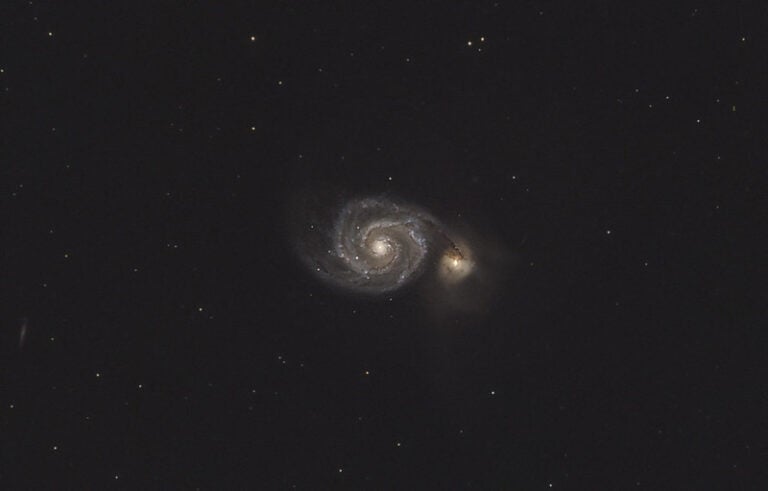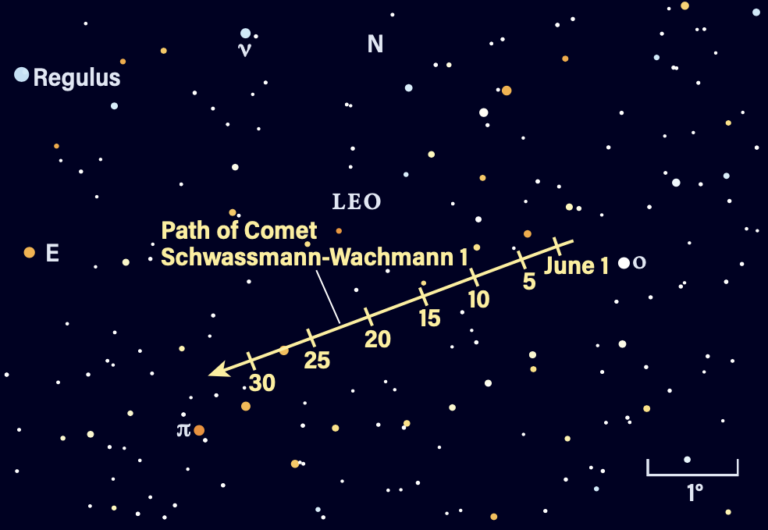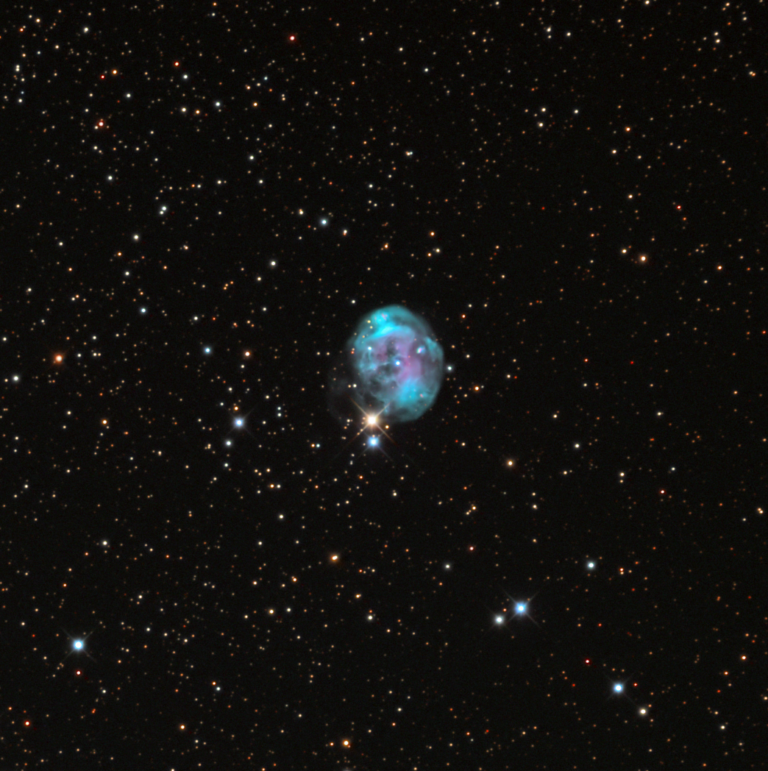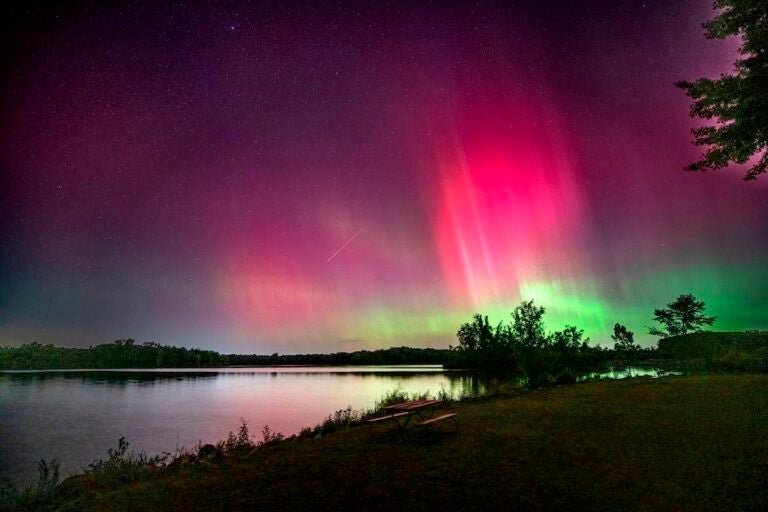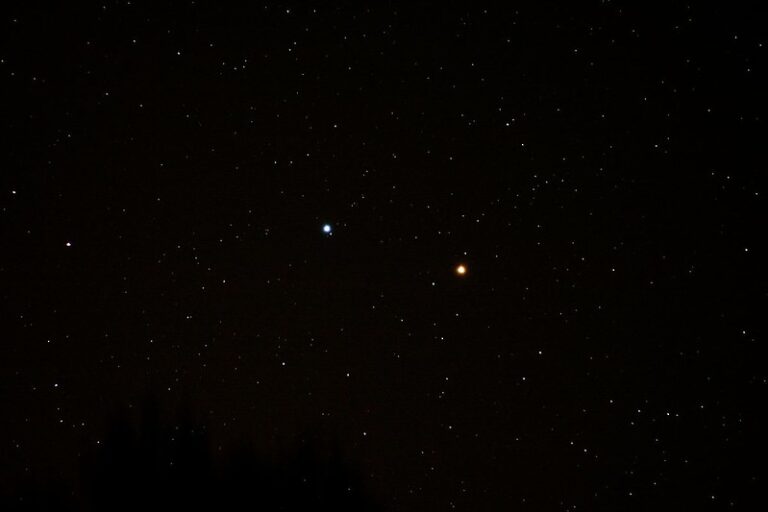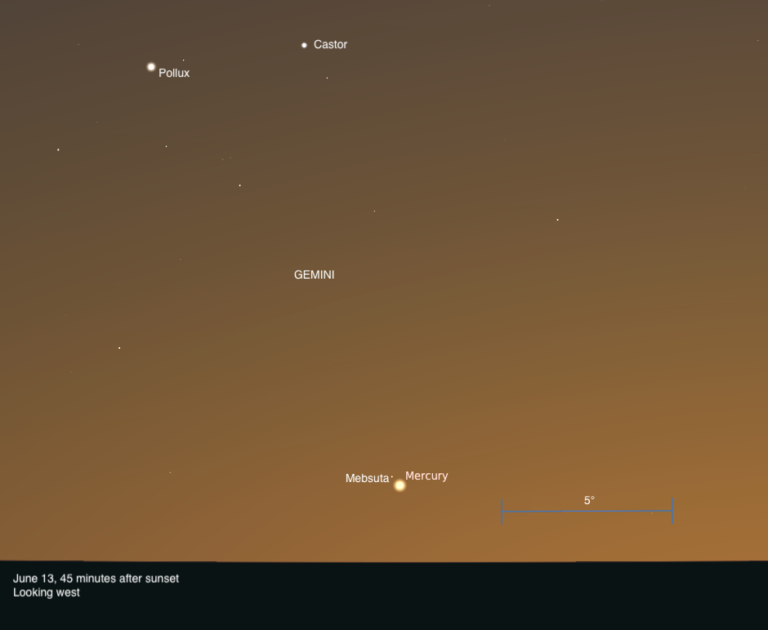Friday, March 10
This week, the Moon doesn’t rise until well after sunset, so it’s the perfect time to try viewing the zodiacal light, generated by sunlight scattering off dust in the inner solar system.
At this time of year, the cone-shaped glow stands in the west roughly an hour to an hour and a half after sunset, lighting up as the sky grows truly dark and lingering for an hour or two. The column of light follows the ecliptic, as the dust responsible for the zodiacal light settles into the plane of the solar system over time.
That dust is the debris left by countless comets swinging around the Sun and shedding material as they travel through the inner solar system. Look for a soft glow spiking up through Aries and Taurus — you’ll need a clear, dark sky (and horizon) to see it. Try for an observing site well above the local surroundings and without any major cities to the west.
Sunrise: 6:19 A.M.
Sunset: 6:01 P.M.
Moonrise: 9:26 P.M.
Moonset: 7:50 A.M.
Moon Phase: Waning gibbous (90%)
*Times for sunrise, sunset, moonrise, and moonset are given in local time from 40° N 90° W. The Moon’s illumination is given at 12 P.M. local time from the same location.
Saturday, March 11
Although no longer at its brightest, Comet C/2022 E3 (ZTF) remains a small-telescope target at around magnitude 9 in the evening sky. It flies high (40°) above the southwestern horizon an hour after sunset, and tonight lies within ½° of the barred spiral galaxy NGC 1637 in Eridanus the River.
The two are located near 4th-magnitude Mu (μ) and Nu (ν) Eridani in the constellation’s northeastern region. Tonight, Comet ZTF lies about 1° due west of Mu and 0.5° due south of NGC 1637. The galaxy is the fainter fuzzball, coming in at 11th magnitude and spanning about 3′ across its (slightly) longer axis. Meanwhile, ZTF may appear mostly round, but with a slightly sharper southern edge and a stubby, wide tail to the north. Can you pick out these subtle features?
Enjoy the pair all evening, though earlier is better — as the night wears on, they’ll sink into the turbulent air near the horizon around the same time as the gibbous Moon begins to rise.
Sunrise: 6:18 A.M.
Sunset: 6:02 P.M.
Moonrise: 10:33 P.M.
Moonset: 8:18 A.M.
Moon Phase: Waning gibbous (83%)
Sunday, March 12
Daylight saving time begins for those regions that observe it this morning at 2 A.M. At that time, clocks will “spring forward” to 3 A.M., meaning the Sun will appear to rise and set an hour later, giving us more daylight later in the day.
The binocular planet Uranus (magnitude 5.8) is roughly 40° high in the west an hour after sunset tonight. It currently sits just over 1° north-northeast of magnitude 5.5 Sigma (σ) Arietis. Appearing as a “flat” blue-gray star, Uranus’ diameter stretches just 3″.
Much more readily visible are the naked-eye planets Venus (20° high an hour after sunset and magnitude –4) and Jupiter (10° high an hour after sunset and magnitude –2.1). Following their early March conjunction, the two planets are now separated by nearly 11°. Venus is now roughly 21° from Uranus — but that’s going to change. Over the next two weeks, the brightest planet in the sky will seem to speed upward night by night, approaching Uranus’ location, which by contrast won’t appear to change much at all. The two planets will meet in a conjunction on the last day of the month.
Sunrise: 7:16 A.M.
Sunset: 7:04 P.M.
Moonrise: —
Moonset: 9:42 A.M.
Moon Phase: Waning gibbous (75%)
Monday, March 13
The 8th-magnitude main-belt asteroid 2 Pallas has recently crossed from Canis Major into Monoceros. Look south after dark and you won’t be able to miss blazing Sirius, the brightest star in the sky and the nose of the Big Dog. Tonight, Pallas is some 6.5° due north of that luminary, making it an easy find with a telescope or binoculars by first focusing on the bright star and then slowly scanning north. The large asteroid sits about 0.5° southwest of a slightly brighter 6th-magnitude field star (HIP 32474).
While you’re in the area, there’s plenty else to see: Several open clusters lie east of Pallas’ current location, including NGC 2345, NGC 2343, NGC 2335, NGC 2353, and M50. There’s also the Seagull Nebula (IC 2177), flying just less than 8° northeast of Sirius and a little southwest of NGC 2335 and nearby NGC 2353. The Seagull is a gorgeous reflection nebula associated with nearby forming stars; its gas glows in response to the intense radiation they emit.
Pallas will continue moving northeastward throughout March, swinging above M50 late in the month.
Sunrise: 7:15 A.M.
Sunset: 7:05 P.M.
Moonrise: 12:43 A.M.
Moonset: 10:17 A.M.
Moon Phase: Waning gibbous (65%)
Tuesday, March 14
A waning gibbous Moon hangs in the early-morning sky, providing an easy observing target for all to enjoy. As the Sun begins to set from the viewpoint of the lunar surface, shadows appear “backwards” relative to their positions early in the month. This offers a different and unique view of our satellite’s surface, particularly for those more familiar with the waxing phases.
The Moon’s terrain will really jump to life through a telescope. First, pay attention to the terminator — the line dividing light and dark (day and night) on the lunar surface. Here is where the most detail abounds, and this morning, it highlights a line of craters running down the middle of the Moon. These include Herschel, Ptolemaeus, Alphonsus, and Arzaschel. Also readily visible is a feature called the Straight Wall, or Rupes Recta. Located roughly centrally within Mare Nubium, the Straight Wall is a long, straight feature that stretches some 70 miles (113 kilometers). Its center lies just east of the crater Birt, which forms a deep, obvious pockmark in the otherwise relatively flat floor of the Sea of Clouds.
Our satellite will reach Last Quarter phase tonight at 10:08 P.M. EDT.
Sunrise: 7:14 A.M.
Sunset: 7:06 P.M.
Moonrise: 1:54 A.M.
Moonset: 11:00 A.M.
Moon Phase: Waning gibbous (54%)
Wednesday, March 15
Neptune is in conjunction with the Sun at 8 P.M. EDT and remains out of sight all month. Those looking to glimpse the solar system’s most distant planet will finally be able to do so early next month, when Neptune reappears in the morning sky.
The mighty planet Jupiter is sinking slowly in the west at sunset. Once the Sun has disappeared and twilight begins to darken the sky, train your telescope on the gas giant. For Midwest observers, the Great Red Spot is just rotating onto the planet’s 34″-wide disk. The giant storm will appear front and center around 8 P.M. MDT (after the planet has set for the eastern half of the country).
Jupiter’s Galilean moons are arrayed out with two on either side: Europa (closest) and Callisto to the west, and Io and Ganymede to the east. It’s the eastern pair that you’ll want to focus on: Larger, slightly brighter Ganymede appears to be passing north of smaller Io. The huge moon sits due north of Io around 8:45 P.M. CDT, right as Jupiter is setting in the Midwest (though observers there and on the East Coast can easily catch the run-up to the event). The scene is more easily visible for those in the western portion of the U.S.; observers there can continue watching as Ganymede slides west and pulls past Io, leaving the smaller moon closer to the planet.
Sunrise: 7:12 A.M.
Sunset: 7:07 P.M.
Moonrise: 3:03 A.M.
Moonset: 11:55 A.M.
Moon Phase: Waning crescent (43%)
Thursday, March 16
Saturn has begun to appear in the morning sky shortly before the Sun. About 30 minutes before sunrise, look east to find the ringed planet glowing at magnitude 0.9 about 3.5° above the horizon. The air here is particularly turbulent, making clear views difficult; nonetheless, it’s worth spending a few minutes with your telescope to see the planet’s mighty rings stretching some 35″ across in the brightening sky. The rings are currently inclined to our line of sight by about 10°.
Those with larger telescopes or video-capture capability may spot the tiny, faint moon Mimas as transit the planet’s disk together with its shadow. The two spots appear on the southeastern portion of Saturn’s face, below the rings. Meanwhile, Enceladus sits just off the planet’s northeastern limb around 6:40 A.M. CDT. Both moons will be difficult to make out in the brightening sky, which is why photography may serve you best.
Saturn’s appearance will continue to improve throughout the month and into the spring, as it rises earlier each day and offers more time for viewing before sunrise.
Sunrise: 7:10 A.M.
Sunset: 7:08 P.M.
Moonrise: 4:06 A.M.
Moonset: 1:00 P.M.
Moon Phase: Waning crescent (32%)
Friday, March 17
Mercury reaches superior conjunction at 7 A.M. EDT. The small planet will soon reappear in the sky, visible in the evening by the end of the month.
With the Moon out of the way in the morning sky, let’s enjoy the bounty that Virgo has to offer in the evening after dark: This large constellation is home to the aptly named Virgo Cluster, anchored by the mighty elliptical galaxy M87. This is famously the home of the first-ever supermassive black hole to be imaged; the galaxy sports a huge jet stretching for about 20″, which can be picked up in some astrophotos.
By about 9 P.M. local time, the region housing this and many other galaxies is some 25° high in the east and continuing to rise. Binoculars will show the brightest members, while a telescope will show more — and more detail. Let’s start with M87, a 9th-magnitude elliptical that sits just less than 8° west-northwest of 3rd-magnitude Vindemiatrix. Spread around M87 within a region some 8° across are several other galaxies, including M60, M59, M58, M90, M89, M86, and M84. These last two (also 9th magnitude) are part of another set of galaxies called Markarian’s Chain, which stretches along about 1½° of sky.
Take your time in this region, make use of our finder chart, and truly enjoy this extragalactic treat!
Sunrise: 7:09 A.M.
Sunset: 7:09 P.M.
Moonrise: 4:59 A.M.
Moonset: 2:15 P.M.
Moon Phase: Waning crescent (22%)

